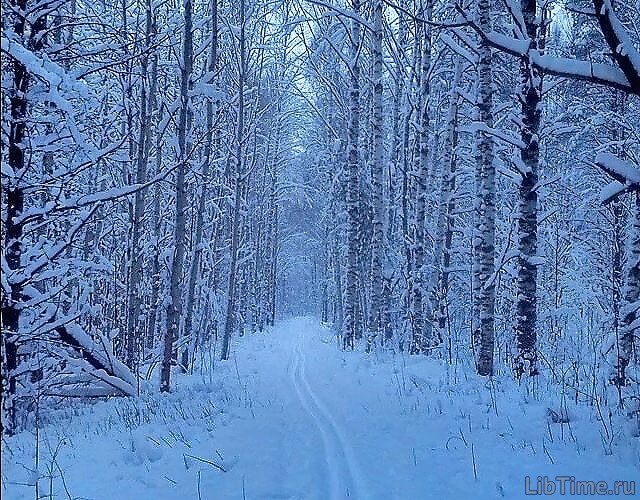Ski tourism
Ski tourism is widely popular. This is evidenced by electric trains filled to capacity on winter weekends and tourist bases.
This is evidenced by the endless ski tracks, stretching behind hundreds of tourist groups of strong and persistent people with backpacks.
Ski tourism serves man
Skis have faithfully served man for many centuries. This is evidenced by ancient images of skiers, which were found on the coastal rock of the White Sea. According to scientists, these petroglyphs date back to the beginning of the II millennium BC.
Epistles and annals of ancient Russia also testify that skis were also used by Slavic tribes that lived on its territory. Thus, Kiev Metropolitan Nikephoros eight hundred years ago wrote about Prince Vladimir Monomakh:
"...izhe more on the bare ground sleeps, and heights of the house runs - orphan wears clothes and shoes, and on skis preskocha" (sleeps, they say, the prince on bare ground, avoids rich choruses, wears simple shoes and clothes, walks on skis).
Throughout the history of development, skis, of course, have undergone significant changes, narrowed the range of their applied functions. At the same time, their specific weight in sports, tourism, mass active winter recreation increases every year.
Tourist skier's outfit
The basic requirements for the outfit of a touring skier include:
- maximum lightness,
- ease of use,
- durability and comfort,
- windproof and waterproof,
- ability to retain maximum warmth at sub-zero temperatures.
Touring skier's clothing
The clothes of a touring skier should consist of:
- thermal underwear,
- a wool tracksuit,
- wool and cotton socks,
- a long warm sweater with a high neck,
- 1-2 woolen caps (helmet),
- woolen and special mittens with cuffs.
Footwear of a touring skier
Much attention is paid to the footwear of a touring skier. Boots should be worn, impregnated with special ointment (silicone cream), have a wide rant.
To protect them from getting wet, and feet from the cold, shoe covers made of any dense material are used. The simplest design of shoe covers is a sewn bag up to the knee or a little higher.
Personal equipment of a touring skier
The rest of a touring skier's personal equipment is in the backpack:
- a cotton or down jacket and fur hat are stowed on top so that they can be quickly retrieved at a rest stop,
- additional woolen suit and socks are in a separate waterproof bag,
- other things are selected in the same way as for hiking.
Skis for hiking should be a little shorter than cross-country skis, in good quality. The sliding surface before the hike should be lubricated with a special lubricant for skis. The poles should have reinforced loops and rings. Groups of beginners should take a spare ski.
Group ski touring equipment
Group equipment for ski tourism is so specific that you have to make it yourself. This applies to tents, stoves, group sleeping bags, sleds, etc. Special books and brochures for tourists are devoted to their design and features. They should be carefully studied when planning a ski trip with overnight accommodation in the field.
Basic movements in the practice of ski tourism
Of the basic movements in the practice of ski tourism with a backpack are used the following:
- on flat terrain and terrain with weakly pronounced hills go alternating four-step steps,
- on gentler slopes you should use skate or stepless walks,
- if the slopes are steeper, use a stepped step, moving "ladder", "herringbone", or "half herringbone".
Most tourists are familiar with these techniques. It is necessary to be more attentive to descents, as on them most injuries occur.
In training outings you need to practice braking techniques "half-plow", "plow", with the help of ski poles. It is also necessary to know how to fall correctly. To do this, you need to crouch down low, fall on your side, straighten up and, putting the skis across the slope, slow down to a stop.
Skiing tactics
The tactics of a ski trip, particularly a day hike, are determined by the objectives, natural obstacles, weather conditions and the condition of the participants. General tactical rules include the following:
- technically difficult sections should be traversed in the first half of the day, avalanche-prone sections - in the early morning;
- daily walking time should not exceed 7 hours, and for beginners 5 hours;
- the mode and pace of movement should be uniform, with a reduction in the duration of transitions in the second half of the day;
- hot lunch (at least tea) and rest in the middle of the day are obligatory;
- when moving, the organism should not be overheated or overcooled;
- constant mutual control of the physical condition of the hikers should be organized;
- do not allow significant stretching of the group, in case of poor visibility reduce the pace and interval between the participants;
- in case of serious weather deterioration stop the movement and organize a break.

Orienteering rules in ski tourism
The rules of orienteering in ski tourism in winter conditions are peculiar. Many landmarks (lakes, rivers, marshes, trails and roads) are hidden under snow or are similar to each other, orienteering in winter has its own peculiarities. Do not try to determine the sides of the horizon by local objects and signs, it is better to rely on a map and compass.
The ability to navigate by azimuth, to time your movement and to determine the distance traveled by time and speed will be very useful. From time to time you should check the correctness of the direction by taking back azimuth to the track.
Safety rules in ski tourism
In ski tourism it is necessary to strictly observe all safety rules in order not to find yourself in a difficult situation:
- One of the main rules is discipline, conscientiousness and mutual assistance among all participants of the hike.
- The group of tourists should be carefully staffed, all should have good physical and technical training.
- The development of the route should correspond to the experience and level of preparation of the group.
- Back-up options should always be available.
- Strictly adhere to the travel schedule and meet control deadlines.
- It is also necessary to clearly think over the equipment, availability of first aid kit, repair kit, food.
- It is necessary to be able to organize overnight accommodation in any conditions, as well as to provide the injured with pre-hospital care and his transportation to a safe place.
If each tourist will firmly and steadfastly observe all the rules of safety, then such ski tourism will bring him only joy and happiness of victory over the winter forces of nature and first of all - victory over himself.


